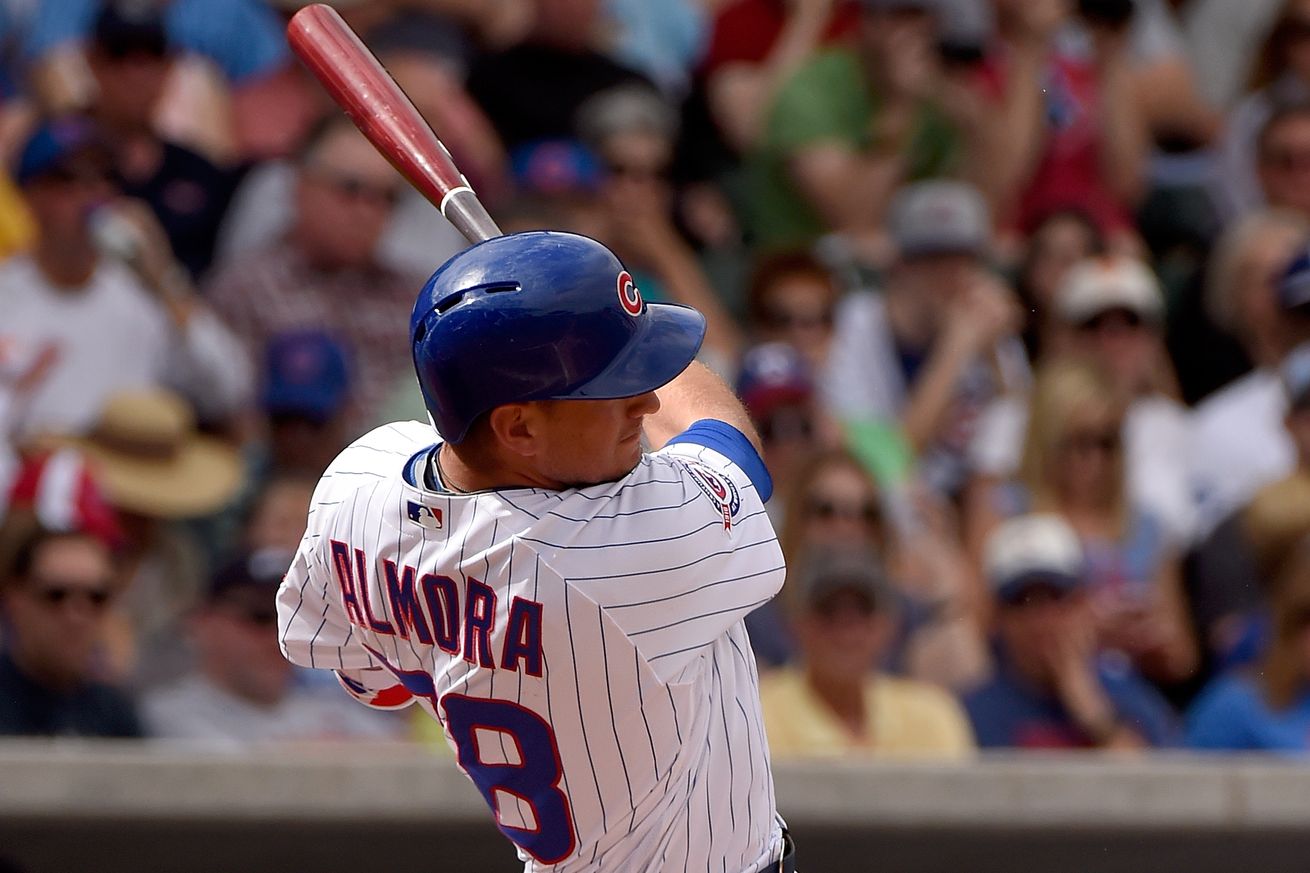One of the few (as it happily turns out) casualties of the Cubs three-years-wandering-the-desert-rebuild was our patience with some of the higher profile prospects. We were spoiled when Kris Bryant emerged fully formed, ready to sock dingers from the minute he signed his contract out of the University of San Diego, or Kyle Schwarber wandering in from an Indiana cornfield to have an immediate impact on the pennant race last season. So, it’s easy for us to look at the development tracks of the last first round draft pick of the Jim Hendry regime and the first first round pick of the Theo Epstein era and wonder what the hell is taking them so long.
But that’s dumb. It’s dumb, because Bryant and Schwarber had the benefit of not signing as draft picks until after they went to college for three years, while Javier Baez and Albert Almora eschewed college to do their developing as professionals, under our watchful, obsessive, and impatient eyes.
They are both in the big leagues now, and they are grizzled, hardened pro baseball veterans of 23 (Baez) and 22 (Almora) years old. They’re still baseball babies. They ooze baseball talent for sure, and both play the kind of defense that Cubs players just never, ever, never, ever played back in the day. 1
Both Baez and Almora came with a lot of hype and a lot of questions. Baez was like a player you try to create in MLB The Show only you only have so many points to use on attributes so you jack up power, speed and defense, and leave plate discipline and pitch selection at 0. Almora was MLB ready defensively as a teenager, but his preternatural ability to get his bat on just about any pitched baseball hampered him. If you make poor contact on a pitch early in the count, you don’t get a Mulligan and get another pitch to drive. You ground out weakly to short on the first pitch and you have to wait your turn to do better next time.
Baez has already become one of the Cubs most useful players. He is an excellent defensive shortstop, but also plays above average defense at third and second and can chip in in the outfield. His strikeout rate is dropping as he becomes more comfortable in the big leagues, and that’s still the last big hurdle he’s going to need to clear.
Almora cruised through the big minor leagues in his first two seasons. He hit well over .300 at four stops those two years, and didn’t get slowed down until he got to AA Tennessee in 2014. He was 20. Twenty-year olds are supposed to struggle at AA. He hit only .234 with a woeful .250 on base average in his 144 plate appearances in the Southern League that year. He struck out 23 times, which isn’t bad and walked twice, which is…horrific.
He repeated AA last year, and struggled for the first half of the season. Meanwhile, the big league Cubs and fans were busy playing with their new toys. Bryant, Schwarber, Addison Russell and Jorge Soler were all in the big leagues. None of them spent much time in the minors. That was the expectation. If you were a really good prospect you didn’t struggle you just came up and started raking. How hard could it be?
It is, of course, extremely hard. Even for really talented guys like Albert and Javy. To their detriment they came along at a time when there was nothing fun going on in the big leagues, so we all spent a lot of our attention on the minors.
By the second half of last year at AA, Albert was hitting. Funny thing about talented guys. They tend to find ways to succeed.
Compare the microscope Albert and Javy were under to how much attention fans pay to Ian Happ or Donnie DeWees. The first and second round picks of last year’s draft are allowed to just plug away in the minors while we are distracted by the fact that the Cubs are the best team in baseball.
They are the best team in baseball because of guys like Javy and Albert, giving Joe Maddon a ridiculously deep, versatile and talented bench.
And you can’t say the guys don’t have a flair for the dramatic. Or, for narrative. Experts went on and on about Javy’s special ability to hit for power.
Javy homered in extra innings in his first ever game.
They went on and on about what an elite defender Albert would be.
Albert threw out a guy at home plate the first time he touched a baseball in a big league game.
We are reminded that good players come in all sizes and shapes and develop on every conceivable timeline. They aren’t all going to show up and be great from day one like Kris Bryant 2 It’s easy to get impatient and think that it’s “never” going to happen for guys. But we know this about the top prospects in the Cubs organization–and it’s especially true of Albert and Javy–the Cubs have really talented players who aren’t afraid to work. Betting against those kinds of guys tends to not pay off in the long term.
The sheer amount of talent on the Cubs roster is staggering. Even with Tim Federowicz on the roster instead of Willson Contreras.
The Cubs don’t need 23-year old Javy Baez or 22-year old Albert Almora to be stars. They just need them to do the things they already do really well to help this team keep winning. It’s one of the very coolest things about this very cool team. When everybody does what they do well, it works. And these days, it works a lot.
Here are those annoying footnotes.
- If I read one more comparison of Almora to Josh Vitters, my head is going to explode. Other than sharing the round they were drafted in and their Cubs jersey number they about as similar as Manny Alexander and Manny Ramirez were (hey, both on steroids, both Red Sox!)
- Well, day two. Day one was a rough one for KB with three K’s.


